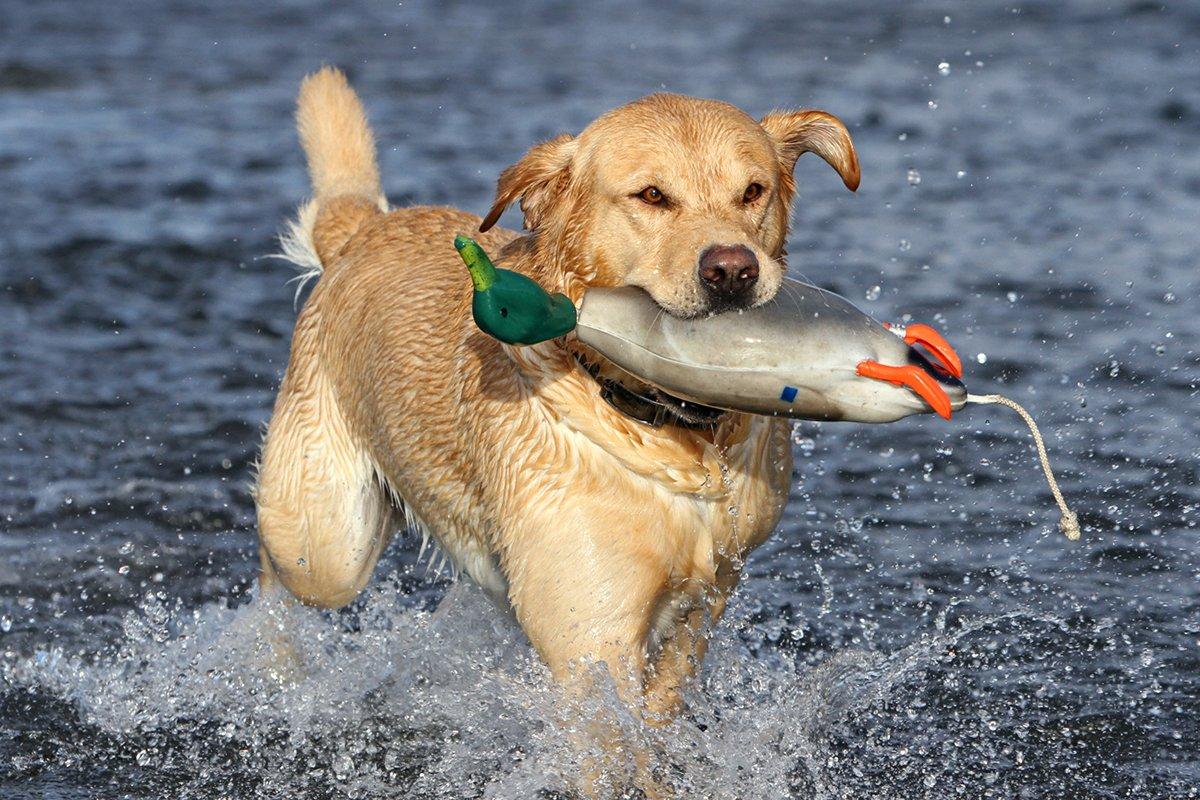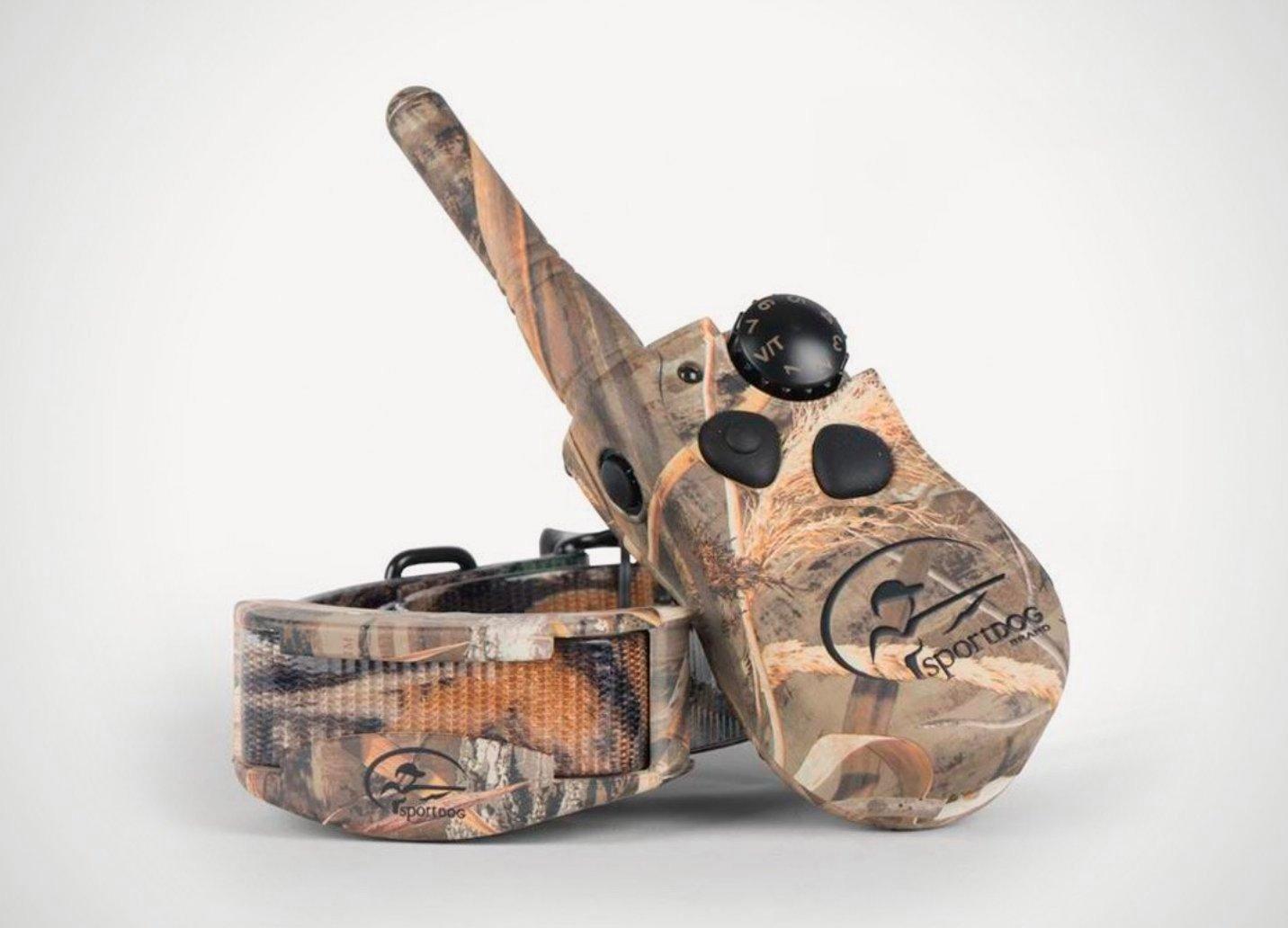How to teach casting and blind retrieves
So far, we've looked at the basics of training, covered a few simple drills for marking and learned some pro trainer tips to help you get on the right track. Now, let's assume that your dog has the basics covered and is running lines on single and multiple marks with distractions. The next progression will usually include casting and blind-retrieve drills.
What benefit does running a straight line and the blind retrieve have in the field? Well, let's assume you've shot a bird that's the Terminator of ducks. It takes a few volleys of No. 3s before flying off and dropping in the corner of a big rice field, somewhere in the cattails about 200 yards away. Your dog did not see the fall, and you know the area at which the bird fell but not the exact location. You bring your dog to heel, line it up toward the fall area and give the back command. Like a bolt, your retriever goes speeding across the flooded field. A mild correction is needed to bring the dog downwind of the fall, so you sit your pup with one whistle blast about 100 yards out and give it an angled back cast to the left. Off your dog goes, slightly angling to the left and directly into the scent trail of the downed bird. Suddenly, the dog becomes birdy and begins hunting with confidence in the fall area. After a brief disappearance in the cattails, your furry buddy pops out with the prize. Your dog returns to your side, duck in hand, and praise ensues.
That's the ideal situation. I've seen it happen this way, but usually, such scenarios involve more whistle blasts, repeated shouts of over and back, and lots of cursing. At some point, the e-collar comes out, and Rover gets a blast for nothing more than being trained poorly by the guy with his finger on the button.
For a dog to properly execute a blind retrieve, it must possess three solid fundamentals: the ability to line (run in a straight line until stopped), stop on a whistle blast and look to you for direction, and finally, take your direction without balking. Those characteristics take months to train to proficiency, and I won't attempt to synthesize all the information required to do so in 2,000 words. However, I'll discuss some things that might help you get tuned up for this season. If your dog is not already in the blind-retrieve phase, it might be a good idea to hold off. You could wind up being pretty frustrated and wanting to use corrections for behaviors your dog has yet to learn (more on that later).
Whistle While You Work
When you're afield, you want your dog under control at all times. That doesn't mean it needs to walk at heel and never leave your side, but you need to know that your dog will, on command, stop or return when you ask. Before the season, make sure your dog is tuned up on whistle commands. For my dog and most others, that means a single blast to sit and two or three blasts for come. When I say a single blast for sit, I mean one whistle, and the dog sits his behind on the ground or begins treading water that instant. He does not swim in circles or trot and look back. He sits. This is simple to train and reinforce before the season, just like recalling a dog with the whistle. A few sessions of that before the season will keep it fresh in the dog's mind and help with snappier blind retrieves in the field, as well as keeping your dog under total control in the field (meaning fewer corrections with the collar in the field). If your dog refuses to sit on the whistle, you cannot give it casting commands, so this falls into the all-important fundamentals area.
Play Ball
The baseball drill will keep your dog sharp and reinforce casting commands. This is simple to set up, and you can often train in your backyard, provided the dog won't face major distractions. Place bumpers at first, second and third base, with your dog on the pitcher's mound and you at home. For meat dogs, this will usually give you all of the casting directions (back, left over and right over) needed in the field.
A few years ago, my trainer buddy Joe suggested that I start working my dog with angled back casts; a favorite of the field-trial crowd but also effective in the field. I now prefer angled back casts over the over-then-back method, as angled back casts better maintain the dog's momentum in the field and tend to drive the dog to the bird faster. I believe that if a bird is down but moving in cover, the faster the dog gets on the scent, the better your chances of recovery.
Teaching the angled back, in broad strokes, involves placing three piles of dummies about 12 to 15 yards apart. Send your dog from your side and stop them about halfway to the piles. To give the command for a left angled back, for example, use the back command in conjunction with canting your arm between the over (straight to the side) and back (straight up) positions. Your dog might be confused at first, so start close to help the dog understand what it's supposed to do. Training the angled back is not an overnight process, and it's often better taught by a pro trainer unless you're familiar with training gun dogs and have the time to work this daily until things come together.
Easy Does It
Before the season, unless you're training for hunt tests or field trials, there's really no reason to make blind training overly complex. That doesn't mean you should run pattern blinds (blind patterns the dog is familiar with) day after day. Although pattern blinds are powerful training tools, I believe cold blinds (blinds placed in an unfamiliar setting or away from the traditional pattern area) prepare the dog for real-world circumstance before the season. If cold-blind training fits into the evolution stage of your dog in the training matrix, it's a great tune-up.
I prefer to train with actual ducks rather than bumpers before the season to allow for better scent and realism. I freeze a few after each season for that purpose or go to a local game preserve and obtain a few for training. When training cold blinds, try to make a few on land where the dog must cross a hazard, such as a shallow ditch, or some type of barrier, such as a stand of tall grass. Also, have a couple more that force the dog to cross water to get into the area.
My dog, much like other dogs, prefers to hunt along a hazard if given the chance. This has always been a problem for him in hunt tests and in the field, so we often focus on this and variations. For example, when training on the farm, I'll place a bumper on the other side of a farm road past a stand of tall grass that lines the way. If I send my dog quartering into that blind so he has to travel 60 yards or farther before encountering the road, he'll often try to hunt the road. That is, he veers off line and begins hunting the near side of the road or just on the other side against the tall grass short of the bird instead of driving over the road and through the brush. In that situation, I make a correction. But remember, my dog has run through the training matrix to that point and is keen on lining, casting and pattern blinds, with a ribbon or two under his belt, so he knows why he's being corrected, during the right circumstances. Again, do not correct a dog that does not understand why it's receiving the pressure.
E-Collar
SportDog WetlandHunter 425 E-Collar System
I cringe when I see some people with e-collars on their dogs. They wield the receiver like a magic wand; a fix-all to dog training's problems and a crutch to fall back on. Make no mistake, frivolous or irresponsible use of an electronic collar can ruin a dog and kill its spirit faster than a switch to their tail. Collar conditioning is a must before you think about strapping one on Fido in the field. After collar conditioning, despite the temptation to use it as a long-distance check chord at every turn, remember, less is usually more. You must show the dog what you want it to do before using a collar correction. In a hunting situation, I seldom use my collar even if he's wearing it. This is not to say my dog runs perfectly in the field every day, but I'd rather use it sparingly and more as a recall device during windy days or when the dog is out of whistle range. You see, most collars have a beep feature. My dog is conditioned to return on the beep, so if he's out of whistle range because of distance or the wind is howling, I can press the beep function, and he'll be on his way back to my side, just as if I'd blown a three-whistle blast at 100 feet.
Conclusion
The clock is counting down to opening day, and we have a few precious weeks left to train. A dog that's well trained and works in the field is a joy to watch and an appreciable hunting partner. In contrast, a dog that breaks, lacks control and is not well trained tends to be more of a liability, with many headaches to follow.
A good dog is the product of a well-executed training matrix coupled with skilled handling. This season, let's see photos of you and your dog in the field. A limit of ducks will be a bonus.
Click here for more Realtree waterfowl hunting content. And check us out on Facebook.








